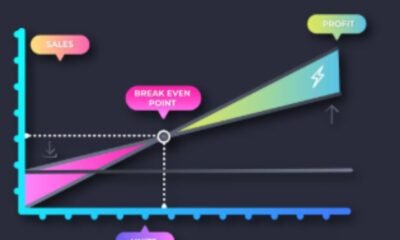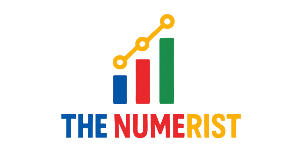BLOG
HMS Photovoltaik and the Future of Clean Energy

Hms photovoltaik refers to the combination of advanced hardware and software in photovoltaic setups—specifically monitoring, inverter technology, and optimization tools. Instead of treating a solar installation as one giant unit, HMS allows panel-by-panel analysis and control.
This means:
- Smarter use of photovoltaic modules
- Integration with HMS inverter technology
- Improved solar panel efficiency
- Real-time solar energy monitoring
- Easy connection to renewable energy storage systems
Think of it as upgrading from an old phone with limited features to a modern smartphone. The core function is the same, but the experience is worlds apart.
The Rise of Solar Energy Systems
Why solar adoption is booming
Solar energy systems have seen exponential growth in the past decade. Falling costs, supportive policies, and consumer demand for clean energy have fueled the transition. But in 2025, buyers want more than panels—they want control, insights, and flexibility.
How hms photovoltaik fits in
With hms photovoltaik, solar energy systems move from passive generators to active, intelligent participants in the household or business energy ecosystem.
Photovoltaic Modules: The Building Blocks
No solar discussion is complete without photovoltaic modules. These panels convert sunlight into usable energy, but they’re only as good as the system behind them.
- Traditional setups link modules in strings. If one panel underperforms, the whole string suffers.
- HMS-enabled systems track modules individually, maximizing efficiency.
This makes PV system optimization easier, ensuring long-term durability and output.
HMS Inverter Technology: Smarter Energy Conversion
The inverter is the heart of any solar system. It converts DC electricity from panels into AC electricity for household or grid use.
HMS inverter technology brings three advantages:
- Microinverter solutions instead of one bulky inverter.
- Panel-level monitoring to catch issues early.
- Higher efficiency even under shading or uneven conditions.
An installer once remarked on a forum:
“After moving clients to HMS inverters, troubleshooting dropped by 80%. People love knowing exactly which panel is causing trouble.”
That kind of visibility is why HMS is changing the game.
Solar Panel Efficiency in 2025
Why efficiency matters
Solar panel efficiency directly affects ROI. More efficient panels = more electricity generated from the same roof space.
How hms photovoltaik improves it
- Independent panel optimization
- Smarter distribution of energy flow
- Real-time alerts to prevent long-term underperformance
Even with dust, shade, or minor defects, HMS systems ensure panels work at their personal best.
Renewable Energy Storage: A Perfect Match
No modern solar system is complete without renewable energy storage. Batteries store excess energy for nighttime or cloudy days, increasing independence from the grid.
HMS ensures storage isn’t just reactive—it’s optimized:
- Batteries charge when panels produce surplus
- Stored power discharges strategically during peak demand
- Monitoring prevents overcharging or rapid degradation
This combination transforms solar from a supplemental source into a true independence solution.
Microinverter Solutions: The Power of Independence
Traditional central inverters create a single point of failure. If they break, the whole system is down.
With microinverter solutions:
- Each panel works independently.
- Small failures don’t cripple the system.
- Safety improves thanks to lower DC voltages.
This resilience is especially valuable for large commercial setups or residential systems in areas with variable weather.
Solar Energy Monitoring: Real-Time Control
The future of solar isn’t just generating energy—it’s knowing exactly how it flows.
Solar energy monitoring via HMS gives:
- Live data on production and consumption
- Mobile apps for tracking performance
- AI-driven predictions for shading and efficiency
One user shared online:
“The app is addictive—I check my solar output more often than my social media feeds.”
That’s the power of real-time feedback.
PV System Optimization
PV system optimization is the continuous fine-tuning of solar output. HMS provides:
- Panel-level adjustments
- Predictive analytics for weather and shading
- Smart integration with household appliances
This isn’t just about energy savings—it’s about future-proofing investments.
Clean Energy Transition: Why HMS Matters Globally
Climate targets and net-zero goals require smarter energy use. HMS-supported solar systems help by:
- Reducing wasted solar production
- Supporting grid stability
- Empowering individuals and businesses to take part in the clean energy transition
This isn’t just tech innovation—it’s climate action.
Smart Grid Integration
The future grid is interactive. Smart grid integration allows HMS systems to:
- Sell back energy during demand peaks
- Sync with electric vehicle charging
- Participate in community energy sharing
For homeowners, this means new revenue streams. For utilities, it means greater reliability.
Real-Life Example: HMS in Practice
A mid-sized business in Berlin installed a 100 kW system with hms photovoltaik, microinverters, and batteries. Within one year:
- Energy bills dropped by 45%
- Surplus energy sold back generated €12,000
- Maintenance issues were cut by 70%
The manager summed it up simply:
“Our solar system is no longer just on the roof—it’s part of our business strategy.”
Pros and Cons of HMS Photovoltaik
Pros:
- Higher solar panel efficiency
- Improved safety
- Real-time monitoring
- Seamless storage integration
- Future-proof with smart grid
Cons:
- Slightly higher upfront cost
- More components to install
- Requires digital literacy for monitoring
The benefits, however, clearly outweigh the drawbacks for most adopters.
FAQ’s
What is hms photovoltaik?
It’s a smart solar system framework that combines photovoltaic modules, microinverters, monitoring, and optimization for maximum efficiency.
How does hms inverter technology work?
It replaces central inverters with microinverters, allowing each panel to perform independently and safely.
Is renewable energy storage necessary?
Not required, but highly recommended. With HMS, storage maximizes self-consumption and provides backup during outages.
Can hms photovoltaik integrate with smart grids?
Yes, HMS systems are designed for smart grid integration, enabling energy trading, EV charging, and grid support.
Conclusion
Hms photovoltaik isn’t just another solar buzzword—it’s the next leap in how we generate, monitor, and use clean energy. From solar panel efficiency to renewable energy storage and smart grid integration, HMS makes solar smarter, safer, and future-ready.
BLOG
Besos Meaning: A Journey into the Heart of Latin American Culture

Besos is derived from the Spanish language, where it translates to “kisses.” However, the meaning of besos goes beyond a simple translation. It’s a term that encompasses a range of emotions, from affection and love to passion and intimacy.
The Cultural Significance of Besos
In many Latin American cultures, besos are an integral part of daily life. They’re a way to show affection, greet one another, and express love. The cultural significance of besos is deeply rooted in the values of warmth, hospitality, and closeness.

The Different Types of Besos
While the term “besos” is often associated with romantic love, it’s not the only context in which it’s used. Besos can be exchanged between family members, friends, and even as a greeting or farewell.
- A beso on the cheek is a common greeting in many Latin American countries.
- A beso on the lips is often reserved for romantic partners or loved ones.
- A beso on the forehead or hand can be a sign of respect, affection, or blessing.
“I remember my abuela giving me besos on the forehead every night before bed. It was a special moment that made me feel loved and safe.”
The Emotional Significance of Besos
Besos are more than just a physical gesture; they’re a way to convey emotions and connect with others. The act of giving or receiving a beso can evoke feelings of comfort, security, and love.
FAQs
Q: What is the meaning of besos in Spanish?
A: Besos is the Spanish word for “kisses.” It’s a term used to describe a range of affectionate gestures, from romantic kisses to friendly pecks on the cheek.
Q: How do you use besos in a sentence?
A: You can use besos in a sentence to express affection or love, such as “Dale besos a tu familia de mi parte” (Give your family a kiss from me).
Q: What is the cultural significance of besos in Latin America?
A: Besos play a significant role in Latin American culture, where they’re used to show affection, greet one another, and express love.
Q: Can besos be used in non-romantic contexts?
A: Yes, besos can be used in non-romantic contexts, such as between family members or friends. It’s a way to show affection and closeness.
Conclusion
Besos, we discover that it’s more than just a word – it’s a way to connect with others and express our emotions. Whether you’re looking to deepen your understanding of Latin American culture or simply want to show affection to those around you, besos is a term that’s worth exploring further.
BLOG
Luxury Cruise Passengers: Staying Safe on the High Seas

Luxury cruises often traverse through exotic waters, some of which are notorious for piracy. The Gulf of Aden, the Indian Ocean, and parts of Southeast Asia are known hotspots where pirates have been active. These areas are often near popular cruise routes, putting luxury cruise passengers at risk.
Piracy Tactics: How Pirates Target Luxury Cruises
Pirates have become increasingly sophisticated, using tactics like GPS spoofing and fake ship identities to target unsuspecting vessels. They often look for easy prey, such as slow-moving ships or those with lax security. Luxury cruises, with their high-value passengers and cargo, can be attractive targets.
The Human Impact: Stories from Luxury Cruise Passengers
“I was on a luxury cruise in the Gulf of Aden when we received a piracy warning. The crew immediately took action, increasing security measures and altering our course. It was a harrowing experience, but thanks to their quick response, we were safe.” The fear and uncertainty that come with a piracy warning can be unsettling, but being prepared and knowing what to expect can make all the difference.
Staying Safe: Precautions and Measures for Luxury Cruise Passengers
To minimize the risk of piracy, luxury cruise lines have implemented various security measures. These include:
- Traveling in convoys or with naval escorts
- Implementing advanced security systems, such as radar and surveillance cameras
- Conducting regular security drills and training for crew members
- Increasing security personnel on board

What Luxury Cruise Passengers Can Do
While cruise lines take necessary precautions, passengers can also play a role in staying safe. Being aware of the risks and taking simple precautions, such as staying informed about piracy hotspots and following crew instructions, can help minimize the risk of piracy.
Piracy Warning Systems: How Luxury Cruises Stay Ahead
Luxury cruise lines use advanced piracy warning systems to stay informed about potential threats. These systems provide real-time updates on piracy hotspots and suspicious activity, enabling crews to take proactive measures to avoid danger.
The Role of Technology in Piracy Prevention
Technology plays a vital role in preventing piracy. Advanced systems, such as satellite tracking and AI-powered surveillance, help cruise lines stay one step ahead of pirates. These technologies enable crews to respond quickly and effectively in the event of a piracy warning.
FAQs
Q: What should I do if I receive a piracy warning on my luxury cruise?
A: If you receive a piracy warning, follow the instructions of your crew immediately. They are trained to handle such situations and will take necessary precautions to ensure your safety.
Q: Are luxury cruises more vulnerable to piracy than other types of cruises?
A: Luxury cruises can be attractive targets for pirates due to their high-value passengers and cargo. However, luxury cruise lines often have advanced security measures in place to minimize the risk.
Q: How can I stay informed about piracy hotspots and safety measures on my luxury cruise?
A: Your cruise line will provide you with information about piracy hotspots and safety measures in place. You can also stay informed through government travel advisories and industry reports.
Q: Can I travel safely on a luxury cruise despite the risk of piracy?
A: Yes, with the right precautions and awareness, you can travel safely on a luxury cruise. Cruise lines take piracy seriously and have measures in place to protect passengers.
Conclusion
Luxury cruise, staying informed about piracy risks and taking necessary precautions can help ensure a safe and enjoyable journey. By understanding the risks and being aware of the measures in place to prevent piracy, you can relax and enjoy your time on board.
BLOG
Mandarin for Mandarin: Tips and Tricks for Language Learners

Mandarin can be a rewarding and enriching experience, especially when you focus on learning Mandarin for Mandarin. By doing so, you can:
- Improve your pronunciation and intonation
- Develop a deeper understanding of Chinese culture and history
- Enhance your career opportunities in China or with Chinese companies
Immersing Yourself in the Language
One of the most effective ways to learn Mandarin for Mandarin is to immerse yourself in the language. This can be done by:
- Watching Chinese movies and TV shows
- Listening to Chinese music and podcasts
- Speaking with native Mandarin speakers
For example, “I started watching Chinese dramas with English subtitles and it really helped me improve my listening skills and get used to the natural flow of the language.”

Tips for Learning Mandarin for Mandarin
When it comes to learning Mandarin for Mandarin, there are several tips to keep in mind:
- Focus on tones and pronunciation
- Practice speaking and listening regularly
- Use language learning apps and resources
Using Language Learning Apps
There are many language learning apps available that can help you learn Mandarin for Mandarin. Some popular options include:
- Duolingo
- HelloTalk
- Pleco
FAQs
Q: What is the best way to learn Mandarin for Mandarin?
A: The best way to learn Mandarin for Mandarin is to immerse yourself in the language by watching Chinese media, speaking with native speakers, and practicing regularly.
Q: How can I improve my Mandarin pronunciation?
A: You can improve your Mandarin pronunciation by listening to native speakers, practicing speaking regularly, and using language learning apps that focus on pronunciation.
Q: What are some common challenges when learning Mandarin for Mandarin?
A: Some common challenges include mastering tones, understanding grammar and syntax, and finding opportunities to practice speaking and listening.
Q: Can I learn Mandarin for Mandarin on my own?
A: Yes, you can learn Mandarin for Mandarin on your own with the right resources and motivation. However, it’s also helpful to work with a language exchange partner or tutor to get feedback and support.
Conclusion
Mandarin for Mandarin requires dedication, persistence, and the right resources. By immersing yourself in the language, practicing regularly, and using the right language learning tools, you can achieve fluency and unlock new opportunities. Whether you’re a beginner or advanced learner, there’s always room to improve and refine your Mandarin skills.
-

 TECH6 months ago
TECH6 months agoApple iPhone 17: Official 2025 Release Date Revealed
-

 BLOG6 months ago
BLOG6 months agoUnderstanding the ∴ Symbol in Math
-

 EDUCATION6 months ago
EDUCATION6 months agoHorizontal Translation: How to Shift Graphs
-

 EDUCATION6 months ago
EDUCATION6 months agoUsing the Quadratic Formula
-

 EDUCATION6 months ago
EDUCATION6 months agoThe Meaning of an Open Circle in Math Explained
-

 HEALTH6 months ago
HEALTH6 months agoGoodNever: Wellness, Simplified
-

 EDUCATION6 months ago
EDUCATION6 months agoWhy Does m Represent Slope?
-

 EDUCATION6 months ago
EDUCATION6 months agoHow to Solve Quadratic Equations 2
